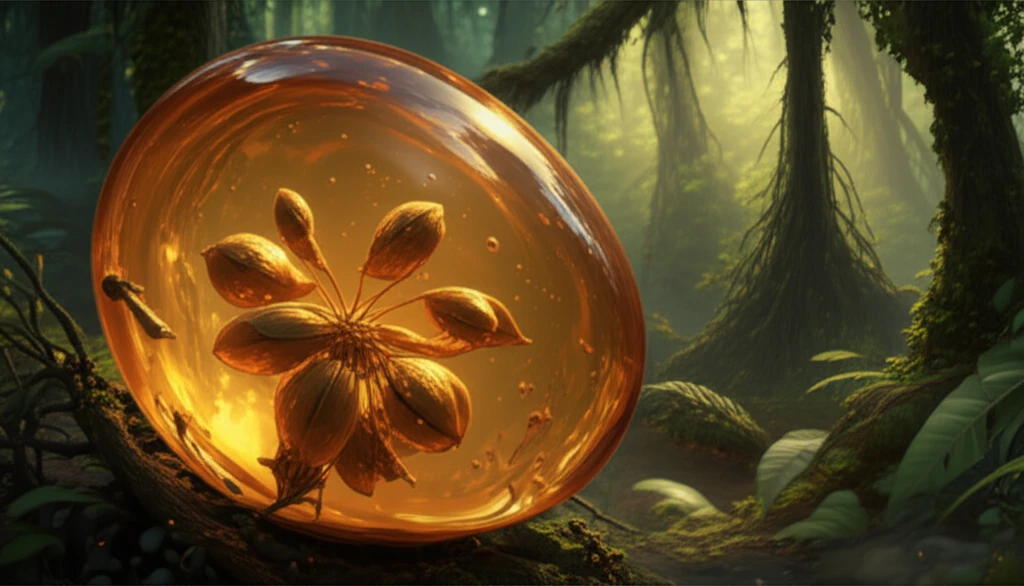
Unearthing Ancient Seeds: What the Spirematospermum Can Teach Us About Plant Evolution
"Fossilized capsules discovered in China offer a rare glimpse into the past, rewriting our understanding of plant distribution and climate change resilience."
Imagine holding a seed from a plant that thrived millions of years ago. Paleobotanists unearth these botanical time capsules, offering invaluable insights into plant evolution, ancient climates, and the interconnectedness of life on Earth. Among these discoveries, the Spirematospermum, an extinct genus of flowering plant, stands out. Its fossilized seeds and capsules, uniquely adorned with spiral striations, have been found across continents, painting a dynamic picture of its journey through time.
Initially shrouded in mystery, Spirematospermum's identity has been a subject of scientific debate, with early researchers misclassifying its remains as members of the Gardenia and Passiflora families. However, groundbreaking research in the 20th century, particularly by Chandler (1925), revealed its true affiliation with the Zingiberaceae family, which includes gingers and other familiar spices. This reassignment marked a significant step in understanding the plant's evolutionary relationships and ecological role.
Now, a recent discovery in Weichang, China, has added a new chapter to the Spirematospermum saga. The unearthing of Spirematospermum wetzleri fossils, dating back to the Miocene epoch, provides crucial evidence about the plant's presence in East Asia. This find not only expands the known geographical range of the species but also offers clues about its migration patterns and adaptation to changing environments. This article explores the story of Spirematospermum, examining its unique characteristics, evolutionary journey, and the lessons it holds for understanding plant resilience in the face of climate change.
The Amazing Journey of Spirematospermum: From North America to Extinction

Spirematospermum's story begins in the Late Cretaceous period when the plant thrived in North America and Europe. Fossil evidence suggests that it may have originated in either of these regions, taking advantage of the North Atlantic Land Bridge to spread its reach. However, while the genus disappeared from North America after the Paleocene epoch, it continued to flourish in Europe, dominating the landscape from the Eocene to the Pliocene.
- Late Cretaceous: Origins in North America and Europe.
- Paleocene: Limited to North America.
- Eocene to Pliocene: Flourishing in Europe.
- Oligocene: Eastward expansion into Asia.
- Miocene: Presence in Eastern Siberia, China, and Japan.
- Pliocene: Decline and eventual extinction.
Lessons from the Past: What Spirematospermum Tells Us About Climate Change
The story of Spirematospermum serves as a cautionary tale about the impact of climate change on plant life. Its rise and fall, migration patterns, and eventual extinction provide valuable insights into the challenges that plants face in a rapidly changing world. By studying the adaptations and limitations of species like Spirematospermum, we can better understand the factors that influence plant survival and develop strategies to mitigate the effects of climate change on modern ecosystems.
Furthermore, the discovery of Spirematospermum in China highlights the importance of continued paleobotanical research in under-explored regions. These findings underscore the potential for new discoveries to reshape our understanding of plant evolution and distribution. By investing in paleobotanical studies, we can unlock further secrets from the past and gain a deeper appreciation for the history of life on Earth.
Ultimately, the story of Spirematospermum is a reminder that even the most successful species can be vulnerable to environmental change. By learning from the past, we can better prepare for the future and work towards preserving the biodiversity of our planet.
